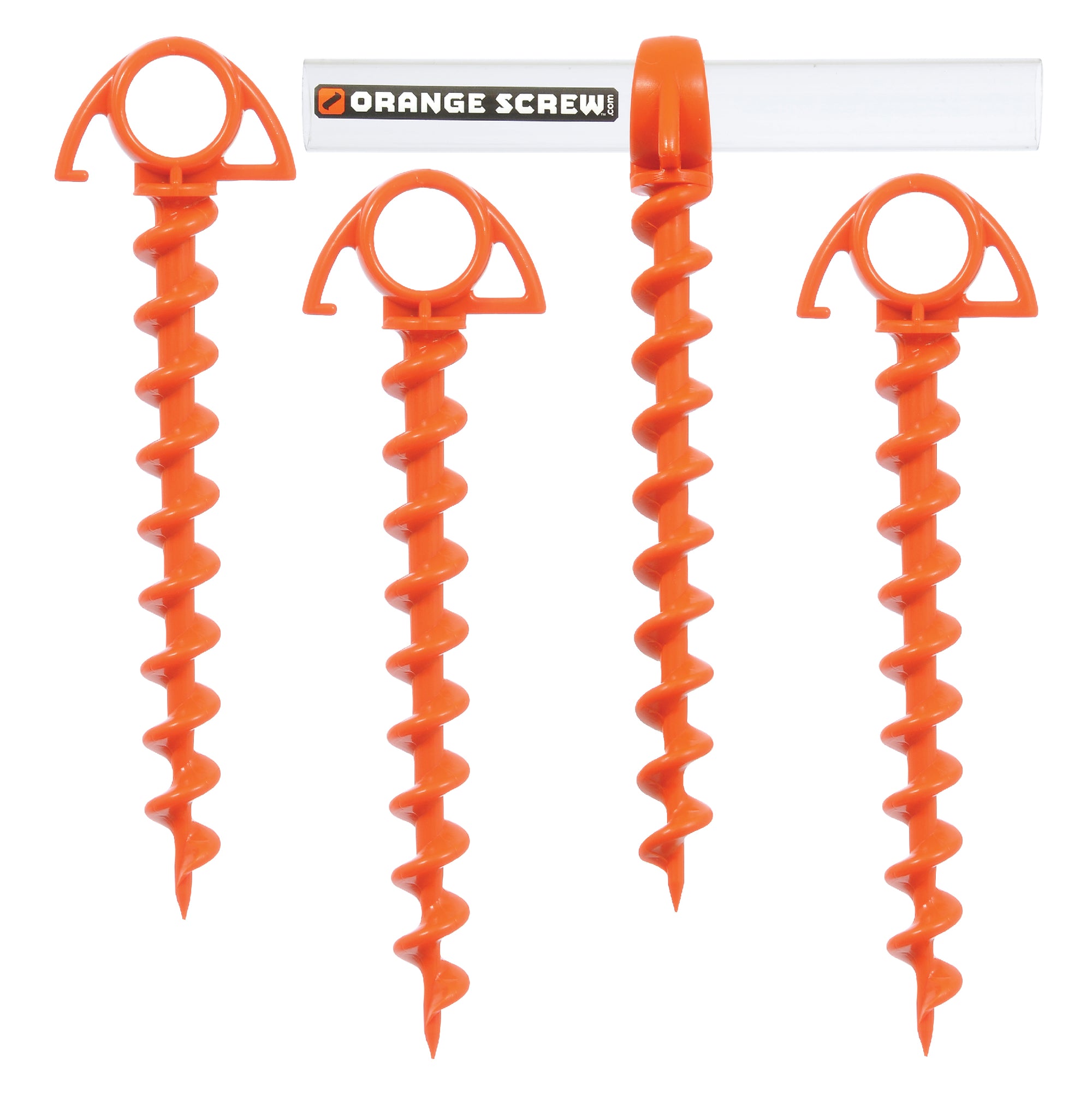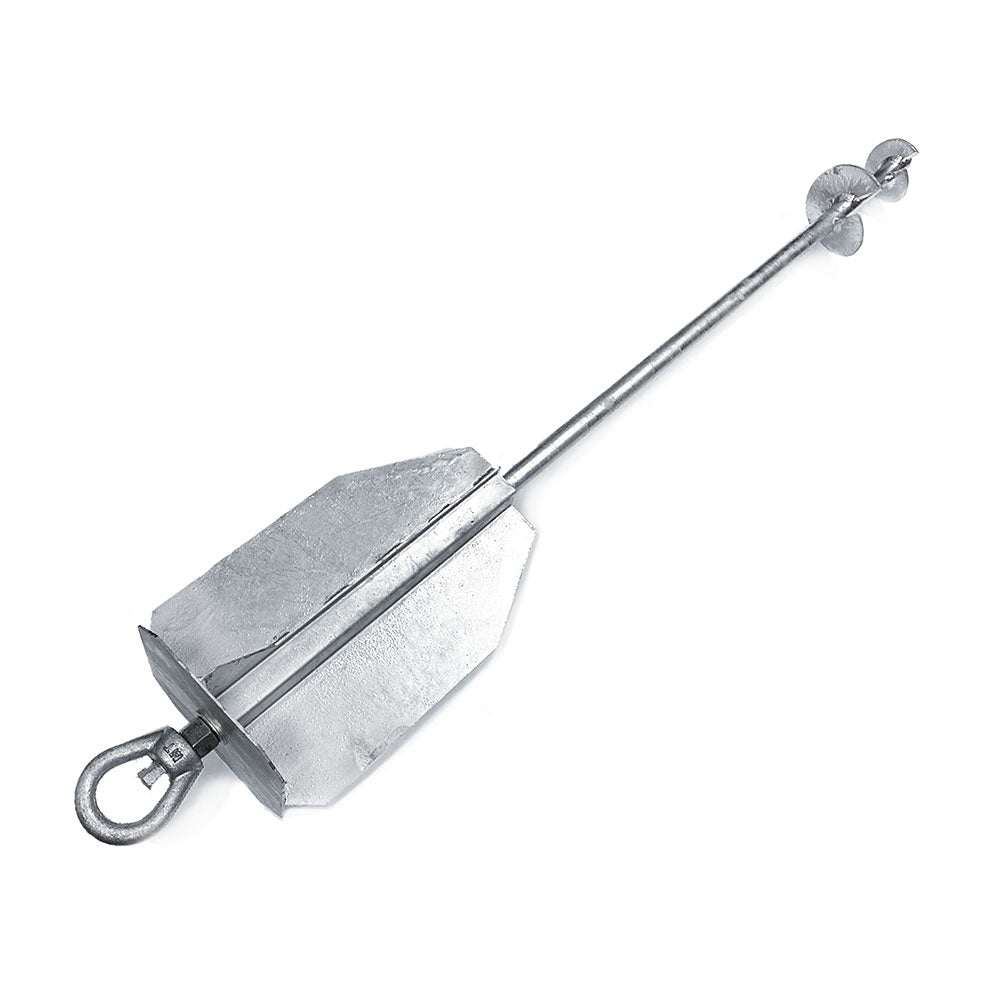Check Out the Various Types of Ground Support for Your Next Project
When embarking on a building and construction or landscaping job, recognizing the different kinds of ground supports readily available is crucial to ensuring both security and resilience (Ground Anchor). From auger anchors, which stand out in diverse soil conditions, to stake anchors created for short-term installments, the alternatives are numerous. Furthermore, concrete and screw supports present one-of-a-kind advantages in particular scenarios, while deadman supports are customized for applications requiring resistance to lateral pressures. The selection of an appropriate support kind can substantially influence the general success of your project, prompting more expedition into their particular advantages and applications.

Auger Anchors
Auger anchors are a popular selection in different building and landscape design tasks due to their distinct layout and reliable anchoring abilities. These anchors include a helical screw-like shaft that is driven right into the ground, enabling a safe and stable hold. The spiral style facilitates simple setup and makes the most of resistance against side pressures, making auger supports particularly effective in applications such as fence, short-term frameworks, and disintegration control.
The installment procedure of auger anchors is reasonably uncomplicated. They can be by hand or mechanically set up, depending on the size and needed deepness. This flexibility enables their usage in varied soil problems, from sandy to clayey terrains. Auger anchors can be conveniently gotten rid of and reused, which includes to their cost-effectiveness and sustainability.
One of the considerable benefits of auger supports is their ability to disperse loads uniformly across the surrounding soil, minimizing the risk of soil disturbance and minimizing ecological effect. Additionally, they are less prone to heaving or loosening gradually contrasted to typical anchoring techniques. Auger supports are an excellent option for tasks needing long lasting and dependable anchoring options.

Stake Anchors
When it concerns safeguarding frameworks in a selection of exterior applications, risk anchors use a straightforward and reputable option. These anchors are typically created from long lasting materials such as steel or aluminum, developed to withstand environmental stresses while offering optimum stability. Their straightforward layout enables for fast setup, making them an ideal selection for irreversible or temporary anchoring needs.
Risk supports are particularly valuable in securing tents, canopies, and various other lightweight structures against wind and climate. They work by being driven right into the ground at an angle, developing a solid hold that stands up to pull-out pressures - Ground Anchor. The performance of risk supports relies on numerous aspects, including dirt type, dampness web content, and the angle of installment
For included safety and security, lots of risk anchors come with accessory factors for bands or ropes, enabling for tension changes as needed. In applications such as landscape design or construction, they can efficiently maintain devices or structures on unequal terrain. On the whole, risk anchors offer a cost-efficient and functional solution for protecting various outside installations, making them a favored choice for contractors and do it yourself fanatics alike.
Concrete Anchors
Concrete anchors offer a robust service for securing frameworks to concrete surfaces, making sure stability and safety and security in various applications. These anchors are essential for jobs varying from household building and constructions to large-scale commercial installments. They are available in different types, consisting of expansion anchors, glue anchors, and undercut anchors, each made for specific lots demands and environmental problems.
Expansion supports rely on mechanical devices to grip the concrete when mounted. They are excellent for medium to heavy-duty applications. Adhesive anchors use high-strength epoxy or material to bond the support to the concrete, providing superior load-bearing capabilities, particularly in fractured concrete scenarios. Undercut supports develop an unique shape within the concrete, supplying outstanding holding power, specifically in applications where tensile tons prevail.
When implemented appropriately, concrete anchors substantially boost the architectural integrity of different jobs, making them indispensable in modern-day building and construction practices. Comprehending the particular demands of your job will certainly aid in selecting the right kind of concrete anchor for the job.
Screw Anchors

Screw anchors are a flexible fastening option that can be efficiently employed in a range of applications where conventional concrete supports might not suffice. These supports consist of a helical style that permits them to be quickly driven into the ground, making them excellent for usage in dirt and various other substratums. Their special framework provides outstanding holding power and resistance to pull-out forces, making them appropriate for various jobs, from landscape design to architectural support.
Among the primary advantages of screw supports is their ease of installment. They require very little tools and can usually be mounted without site here the requirement for excavation, which saves both time and labor prices. In addition, screw supports can be gotten rid of and reused, using a sustainable remedy for short-lived applications.
Screw supports are specifically advantageous in locations where soil problems are challenging, such as loose or sandy soils. Their capacity to be installed at varying depths permits for personalization based on details job needs. Generally, screw supports provide a reliable and reputable anchoring technique, making them an excellent option for designers and contractors seeking reliable options for their projects.
Deadman Anchors
Deadman supports work as a robust solution for stabilizing frameworks in difficult problems, particularly where typical anchoring techniques may fail. These supports include large, heavy objects buried underground, which produce resistance versus lateral pressures. The style generally involves a horizontal element, such as a block of concrete or a metal plate, buried in the soil, to which straps or wires are attached.
The efficiency of deadman anchors hinges on their capacity to distribute loads over a larger location, lowering the danger of failure in unpredictable soil conditions. They are specifically useful in applications such as maintaining walls, momentary frameworks, and slope stablizing, where dirt motion can compromise the honesty of the framework.
Setup of deadman supports calls for cautious preparation to guarantee they are put at the right deepness and orientation, optimizing their load-bearing capability. While they may call for more labor and product than lightweight anchors, their integrity in unfavorable problems makes them invaluable for long-lasting jobs. Deadman anchors are versatile and can be adapted to numerous applications, making them a go-to choice for engineers encountering unique obstacles in their projects.
Final Thought
In summary, choosing the proper Discover More Here kind of ground support is vital for guaranteeing security and protection in different tasks. Auger anchors master varied soil conditions, while stake anchors suit short-lived applications. For concrete surfaces, expansion and sticky supports give dependable options, and screw supports use convenience in tough surfaces. Deadman supports are especially reliable in resisting lateral pressures for retaining walls. Careful factor to consider of these options will certainly enhance project end results and structural honesty.
Furthermore, concrete and screw anchors existing special benefits in particular situations, while deadman try this out supports are tailored for applications needing resistance to side forces - Ground Anchor.Auger anchors are a preferred choice in different construction and landscaping projects due to their special layout and effective securing capabilities. They come in different kinds, including growth anchors, glue supports, and undercut supports, each made for specific load requirements and environmental conditions
Adhesive supports make use of high-strength epoxy or material to bond the anchor to the concrete, using superior load-bearing capabilities, specifically in broken concrete scenarios. In general, screw anchors provide a reliable and reliable securing technique, making them an outstanding selection for service providers and engineers looking for reliable options for their jobs.